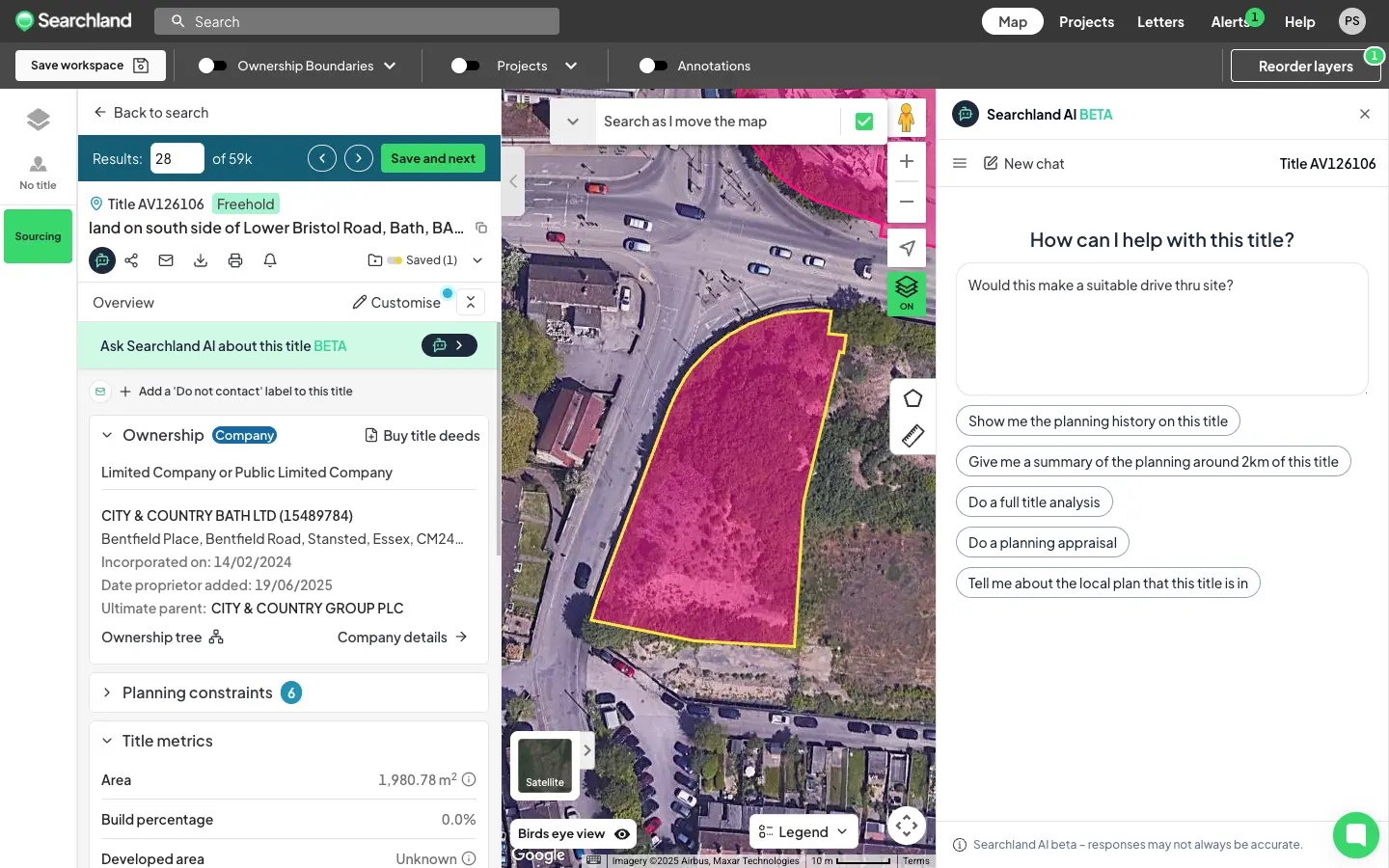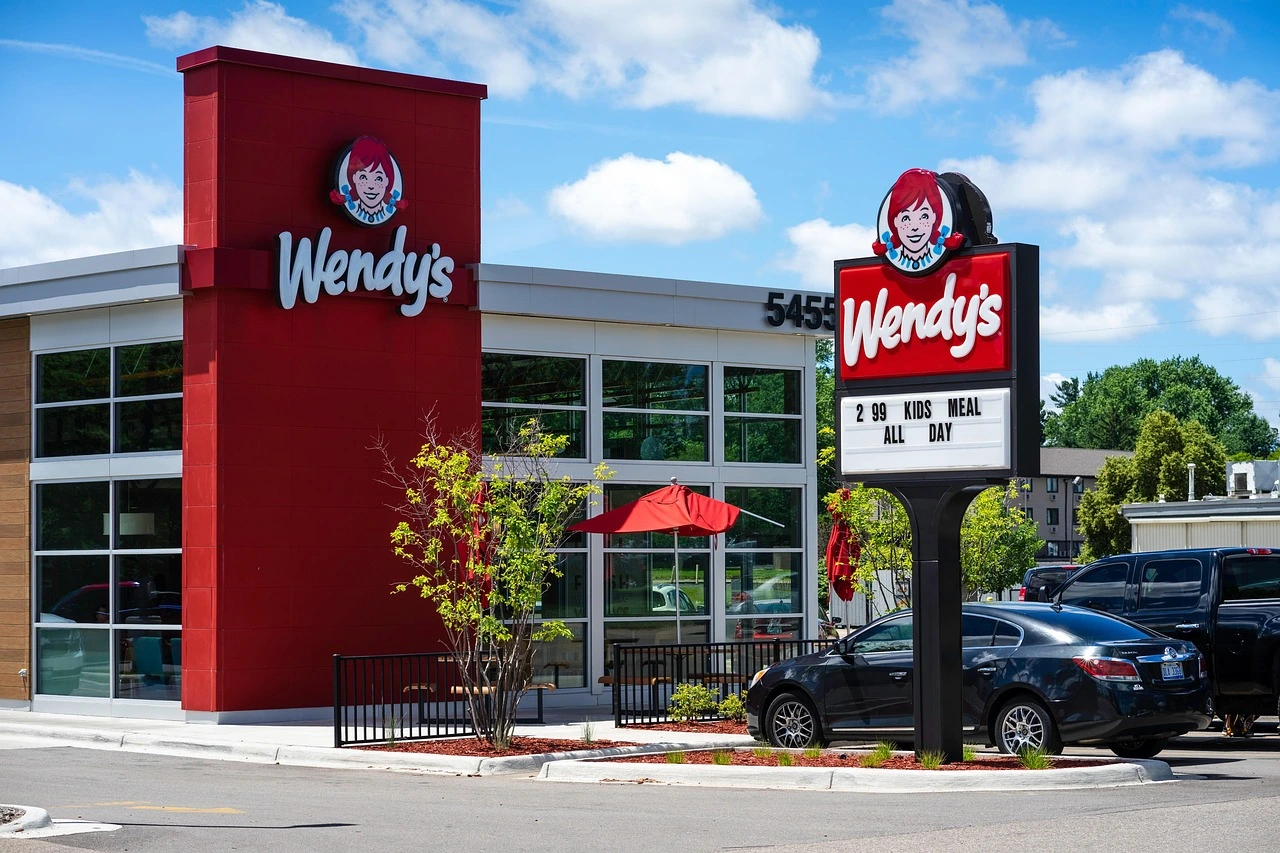The UK's quick-service restaurant (QSR) sector is projected to reach £40.5 billion in 2025 and grow to more than £51 billion by 2030. With dine-in and takeaway demand now stable, the next stage of growth will come from improving convenience - and that means more drive-thru formats across the UK.
But there’s a problem: suitable drive-thru sites are limited, competition is intense, and “good enough” locations rarely perform. Securing the right plot, fast, is now a strategic advantage.
In this guide, we’ll break down:
- What makes a high-performing drive-thru location in the UK
- The minimum site and planning requirements developers should look for
- Why conventional site sourcing is too slow
- How modern land sourcing platforms help QSR operators secure better drive-thru sites, faster
Why UK drive-thru locations are so competitive
Finding a viable drive-thru location in the UK is not just about spotting a vacant roadside plot. Operators are all chasing the same core characteristics: visibility, access, and throughput. Those sites are rare, and the first team to validate them usually wins.
High-visibility plots with strong traffic flow and workable site geometry are in short supply - especially near busy A roads and major suburban arterial routes. That scarcity creates bidding pressure not just between QSR brands, but also against fuel retailers, coffee chains, and convenience retail.
What makes a successful drive-thru location?
Drive-thru success in the UK depends on three core elements that directly affect revenue potential.
1. Visibility
Your site must be obvious from a distance, ideally to drivers approaching at speed.
Strong drive-thru locations are:
- Highly visible from major roads
- Located on or very close to key arterial routes
- Positioned to capture natural traffic flow (commuters, school runs, airport runs, etc.)
If drivers don’t know you’re there until they’re past you, you’ve already lost the conversion.
2. Accessibility
Drivers must be able to enter and exit quickly without complex turns or awkward junctions.
Important access factors include:
- Simple left-in / left-out (or UK equivalent easy ingress/egress)
- Proximity to roundabouts, slip roads, or service spurs
- Enough circulation space for queuing without blocking entry points
Accessibility becomes even more critical at peak times (breakfast, school drop-off, lunch, late evening).
3. Throughput
A drive-thru is only profitable if it can process vehicles efficiently. Bottlenecks destroy the model.
Throughput drivers include:
- Space for vehicle stacking and circulation
- Dual-lane layouts (two lanes preferred at peak)
- Operational layouts that avoid conflict between click-and-collect, dine-in, and drive-thru traffic
- Dedicated on-site parking for dine-in or waiting bays
Essential site characteristics for UK drive-thru development
Below are the non-negotiable features QSR development teams typically look for when sourcing or acquiring drive-thru locations in the UK.
Minimum physical and commercial requirements
- Dense local catchment area (sufficient population and daytime workers)
- High daily traffic volume
- Prominent roadside presence
- Minimum plot size of ~0.3 acres (or c. 2,500 sq ft building footprint and associated circulation / parking)
- Standalone car parking
- Clear space for efficient vehicle circulation on-site
- Capacity for two lanes at peak trading times
These factors apply whether the plan is:
- A new-build standalone unit on a retail or leisure park
- Conversion of an existing roadside unit with parking
- A greenfield or brownfield roadside plot available on leasehold terms
If a site cannot physically support throughput and circulation, it won’t trade at target volumes - even if the traffic count looks attractive on paper.
The drive-thru sourcing challenge
Most developers still rely on slow, manual workflows to find and assess potential drive-thru sites. That approach is no longer competitive.
Manual searches drain resources
Traditional site sourcing usually involves:
- Hours spent on Google Maps with no ownership or planning context
- Navigating dozens of different local authority planning portals
- Relying on property portals that only list on-market opportunities
- Missing off-market or pre-market sites that competitors are already circling
- Manually compiling and reconciling data from multiple systems
This isn’t just inefficient. It increases the risk of acting too late.
The drive-thru data problem
To seriously evaluate a drive-thru opportunity in the UK, you need fast answers to questions like:
- Who owns the land?
- Is leasehold possible?
- What’s the planning status today?
- Is there precedent for drive-thru at/near this location?
- How much traffic passes this site daily?
- Does the site geometry actually support a dual-lane layout with stacking?
That data exists - but it’s fragmented:
- Traffic count databases
- Land ownership and title records
- Planning histories and local policy constraints
- Leasehold comparables and rental tone
- Brownfield / greenfield status
- Catchment demographics
Accessing those sources one by one, then manually aggregating, slows due diligence. Slower due diligence means someone else can move first.
When acquisition teams are under pressure to feed pipeline, data fragmentation = missed opportunities (and expensive mistakes).
Why speed now decides who wins
The UK drive-thru race isn’t just about budget. It’s about timing.
Multiple QSR operators (and coffee chains, petrol forecourts, convenience retail, etc.) are chasing the same high-traffic arterial locations. The brand that can:
- Identify a viable site,
- Validate planning feasibility,
- Justify commercial terms,
- Move to heads of terms
…fastest, usually secures it.
The difference between landing an arterial roadside plot with 24/7 traffic and watching a rival sign it first often comes down to assessment speed — not rent.
How Searchland streamline drive-thru site sourcing
Land intelligence platforms like Searchland centralise fragmented datasets and automate the slowest parts of site assessment. This turns multi-day research into minutes of targeted analysis.
Instant site identification
Instead of manually scanning maps and council portals, you can view UK drive-thru opportunities against live constraint layers such as:
- Distance to major A roads and arterial routes
- Traffic volume data (passing daily traffic)
- Plot size suitability (e.g. ≥0.3 acres)
- Greenfield / brownfield status
- Settlement proximity for catchment strength
- Planning constraint levels
This surfaces both:
- On-market sites (publicly listed)
- Off-market sites (not yet in the open market but clearly viable)
Those off-market candidates are where most of the long-term value sits.
Integrated commercial intelligence
To negotiate effectively, you need to know the real rental tone and deal structure for comparable sites.
Platforms like Searchland layer together:
- Live leasehold availability
- Rental comparables
- Sales history for similar assets
- Local market performance indicators
That means you’re pricing offers against reality, not guesswork. You can stay competitive without overpaying just to beat a rival.
AI-powered site assessments
Historically, asking “Can this plot become a drive-thru?” meant days of manual checks.
Now you can generate planning-led suitability assessments in minutes using:
In practice, that means you can screen dozens of potential drive-thru sites in the time it used to take to assess one.

Practical applications for QSR development teams
1. Monitor high-traffic corridors
Overlaying traffic volumes with available plots reveals UK locations with built-in demand, such as:
- Major A road networks and motorway junctions
- Arterial routes with reliable daily commuter flow
- Approaches to airports and rail stations
- Service routes where drivers naturally slow, queue, or stop
These corridors tend to outperform because you’re capturing existing demand, not creating it.
2. Identify conversion opportunities
Not every drive-thru needs to be a new build.
Existing roadside buildings with:
- Established parking layouts
- Adequate circulation
- Strong visibility from a main road
…can often be converted faster (and on lower capex) than delivering a brand-new unit.
Being able to instantly view building footprint, historical use class, planning history, and parking geometry in one place makes it far easier to shortlist high-potential conversion stock.
3. Track competitor movements
Watching planning applications for rival drive-thru operators delivers two advantages:
- You see which corridors competitors are targeting
- You understand which local authorities are more (or less) comfortable approving drive-thru formats
This helps you:
- Find similar sites in the same geographies before they’re saturated
- Avoid councils that have recently refused comparable schemes
It’s not just defensive. It’s proactive pipeline strategy.
4. Streamline preliminary due diligence
With planning constraints, ownership, leasehold comparables, traffic density, and catchment demographics in a single view, you can build a confident “go / no go” position on a site quickly.
That speed lets you run a larger pipeline without scaling headcount at the same rate.
4. Explore complex estates or retail parks
Searchland’s Buildings tool breaks multi-occupancy titles (retail parks, industrial estates, mixed-use blocks) into the actual units you care about—showing who’s in each unit, floor-by-floor detail, historic leases and sales, construction info (height, materials, roof type), and even whether it has solar - so you can spot viable drive-thru opportunities that a title-level search would miss.
Why it matters for drive-thru rollout
- Unit-level visibility (not just title-level): Explore every building on a title, precisely mapped, with layers for use class, age and occupancy—ideal for identifying edge/end units or standalone pads within a larger estate.
- Occupiers & leases, all in one place: See current/historic occupiers, registered addresses, lease and sales history, and related planning applications to quickly gauge turnover risk and negotiation angles.
- Buildability at a glance: Instantly review height, floors, roof area/pitch and materials—useful for signage strategy, services routing, and lightweight add-ons.
- Fast filtering: Zero in on buildings that match your criteria (e.g., use class, materials, roof type) in seconds instead of manually sifting.
Case study: Five Guys UK drive-thru expansion
One recent success story: Five Guys used Searchland to identify and assess new drive-thru sites across the UK.
By consolidating traffic data, ownership, planning precedent, and on-market/off-market status in one workflow, acquisition teams were able to prioritise only the most commercially viable plots and move decisively before competitors.
The result: faster rollout, stronger locations, less wasted resource.
Securing your competitive advantage
Drive-thru growth in the UK isn’t slowing. But the window between “possible site” and “off the table” is getting smaller.
The operators who win are the ones who:
- Know exactly what a viable drive-thru site looks like
- Can validate planning risk and commercial terms quickly
- Can act faster than competing brands chasing the same arterial plots
If you’re currently relying on manual searches, disconnected data, or ad hoc map work, you’re already at a disadvantage.
Ready to find drive-thru locations in the UK faster?
Searchland helps QSR developers identify, qualify, and secure high-performing drive-thru sites - on and off market - in minutes, not weeks.
Book a demo today to see:
- Live traffic volumes against available plots
- Instant planning / ownership summaries
- Off-market drive-thru opportunities competitors haven’t touched yet
Take the first step towards a faster, more defensible UK drive-thru pipeline.








